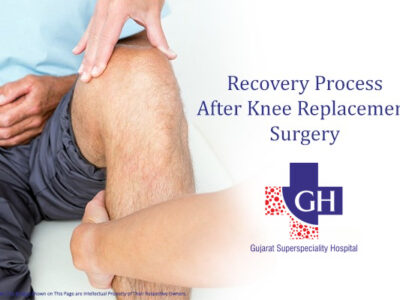Are you suffering from knee pain? Is it hurts when you bend your knee or walk? Is life becoming difficult for you to walk up and down the stairs? Taking medicines and painkillers yet your knee hurts?
Well if all these questions represent your present condition! Then you might be suffering from osteoarthritis, rheumatoid arthritis, hemophilia, gout, disorders that cause unusual bone growth, death of bone in the knee joint following blood supply problems, knee injury and knee deformity with pain and loss of cartilage. All these issues contribute to your knee pain even when your knee is in the condition of resting. It is because of these conditions even strongest of pain killer are not able to subside your pain.
Wondering what might be the solution? Well if your disease or problem has been identified in the early stage then your doctor must have told you that you need to do exercise and take medicines. But for many of you your doctor might have told you about knee replacement surgery. Well if you are one of those where your doctor have suggested knee replacement surgery for you, well in that case your knee is completely worn out and no medicine and exercise can actually treat your issue.
This article is rightly for all of you for whom their doctors have suggested knee replacement surgery. First thing don’t be scared because I know many off you are delaying the surgery just because you are scared. Today knee replacement surgery is just a common procedure like any other surgery so there is nothing to be worried about; it is complete safe and 100% genuine solution for your knee pain. For all those who have been prescribed knee replacement surgery well let us take you through the step by step procedure of how it is done, so that you have a clear idea what it is and how it will benefit you.
What is Knee Replacement Surgery?
Knee replacement, also called knee arthroplasty or total knee replacement, is a surgical procedure that requires an orthopedic surgeon to make precise measurements and skillfully remove the diseased portions of your bone, in order to shape the remaining bone to accommodate the knee implant, for resurfacing a knee damaged by arthritis. Metal and plastic parts are used to cap the ends of the bones that form the knee joint, along with the kneecap. This surgery may be considered for someone who has severe arthritis or a severe knee injury. The goal of knee replacement surgery is to resurface the parts of the knee joint that have been damaged and to relieve knee pain that cannot be controlled by other treatments.
Let’s take a look at the step by step procedure to knee Replacement surgery!
Step 1: The Procedure of Knee Incision
In this step, the orthopedic surgeon makes a small cut or incision across the front of your knee. This allows the surgeon to gain access to the kneecap, or scientifically referred to as the patella. In case of a traditional knee replacement surgery, the incision that is made is usually between 8 to 10 inches long. However in case of minimally invasive knee surgery, the incision that is made is usually between 4 to 6 inches long. Once the surgery is complete a small scar will be left behind for the incision made. Now it is for you to judge as to whether or not the pros of the larger scar of the incision outweigh the cons of a smaller surgical area, based on which the surgical approach should be decided. Please talk to your doctor about the procedures available for knee replacement surgery based on which you and your doctor should opt for the right approach, which will completely resolve your issue.
Step 2: The Procedure of Kneecap/Patella Rotation
Once the incision has been made the first part visible through the incision is your kneecap, called the patella. Based on the size of the incision and access the surgeon will decide on any further requirement of an incision. Once your knee region is open, the surgeon will rotate the patella that is protruding outwards visible from the incision outside the knee area. This will allow your surgeon to view the area that is needed to be followed by performing the surgical procedure.
Step 3: The Procedure to Prepare your Thigh Bone (Femur)
Once the patella has been rotated and the decision has been made for surgical action, the first bone your surgeon will look forward to intervene and take a look out for repair and resurface is your thigh bone, scientifically known as the femur. After that your surgeon will look forward to thoroughly open up and exposed your knee joint. After which the surgeon will carefully measure your femur bones and make precise cuts using specialized surgical instruments called Oscillating saws and rotary drills. This instrument will help to precisely access and operate on the damaged bone and cartilage, which are then cut out from the end of the femur. Once the damaged bones and cartilage from end of your femur is cut and resurfaced, it is surgically ready to fit the first part of the artificial knee, the femoral component.
Step 4: The Procedure of Attaching Femoral Component
After getting the femur bone ready for attaching the femoral component the surgeon attaches the metal femoral component made from titanium, cobalt, and chromium alloy to the end of your femur. After which the surgeon uses bone cement (Polymethyl methacrylate {PMMA}) to seal it into place. This is done to ensure the distal femur attached; has an asymmetrical anterior flange similar to the patellar grove, which is useful to avoid lateral dislocation of the patella.
Step 5: The Procedure of Preparing your Shin Bone (Tibia)
Once the femoral component has been put into place the next bone your surgeon looks forward to resurfaces is your shinbone which is scientifically often referred to as the tibia. The surgeon then follows the same routine he carried out in the case of the femur bone. Your surgeon will use Oscillating saws and rotary drills to remove the damaged bones and cartilage from the top of the tibia and then shapes the bone to fit the metal and plastic tibial components.
Step 6: The Procedure of Implanting the Tibia Component
Once the tibia has been made ready by your surgeon, the next step to approach will be fitting the tibia component. The tibia component has two parts a tibia tray made from titanium and a polyethylene insert made from medical grade plastic. The bottom portion of the implant will be put into place first, which is the tibial tray, which is fitted onto to the tibia and secured into place using bone cement. Once the tray is has been put into place, the surgeon will snap in a polyethylene insert to sit between the tibial tray and the femoral component and act as a kind of buffer. This insert will provide support for your body as you bend and flex your knee.
Step 7: The Procedure of Patella Readjustment
Once the tibia component has been properly fixed the next step would take into account re-setting the patella into place. However before returning the patella to its normal position, your surgeon might need to flatten the patella and fit it with an additional plastic component (medical grade) in order to ensure a proper fit with the rest of your implant. The plastic piece, if needed, is cemented to the underlying bone so that the patella can be adjusted as per the requirement of the patient and properly fit the surgical site.
Step 8: The Procedure of Finalizing the surgery
Once the patella has been securely placed on the surgical site to complete the entire surgical procedure, your surgeon will bend and flex the knee to ensure that the implant is working correctly, and that alignment, sizing, and positioning is suitable. To complete the procedure, the surgeon will close the incision with stitches or staples, and then bandage it and prep you for recovery. You may leave the operating room with your leg in a continuous passive motion (CPM) machine that will gently bend and flex your new knee for you while you are lying down. This would ensure proper blood flow the surgical site and also ensure that the movement of your knee is restored in the fastest possible manner.
The introspection across the step by step procedure of knee replacement surgery clearly highlights how simple the overall process. So if your orthopedic doctor has recommended you knee replacement surgery then worry no more get in touch with us at Gujarat Superspeciality Hospital, and we would be happy to help you.
Why Choose Us?
At Gujarat Superspeciality Hospital we are equipped with all the latest technology required for knee replacement surgery. With years of experience and over 1000 successful surgery we proudly announce ourselves as the best in the business. Our orthopedic surgeons are well trained and equipped with all latest technology to ensure your surgery remains safe and painless. We also ensure proper follow up after the surgery to make sure that our patients can recover fast. Further at Gujarat Superspeciality Hospital we provide one of the most successful and complete orthopedics and rehabilitation program in the region. Our program facility includes nutrition counseling, spiritual resources, and emotional support. At Gujarat Superspeciality Hospital we also provides personalized post- surgery rehabilitation plan to get the patient back to living a healthy active life, pain managing after knee replacement, which prevents several complications and infections, ensuring every customer is satisfied with their treatment. So if you are looking for knee replacement surgery please book your appointment now through our website or you can call us on our hospital number displayed on the website to know more on knee replacement surgery.

